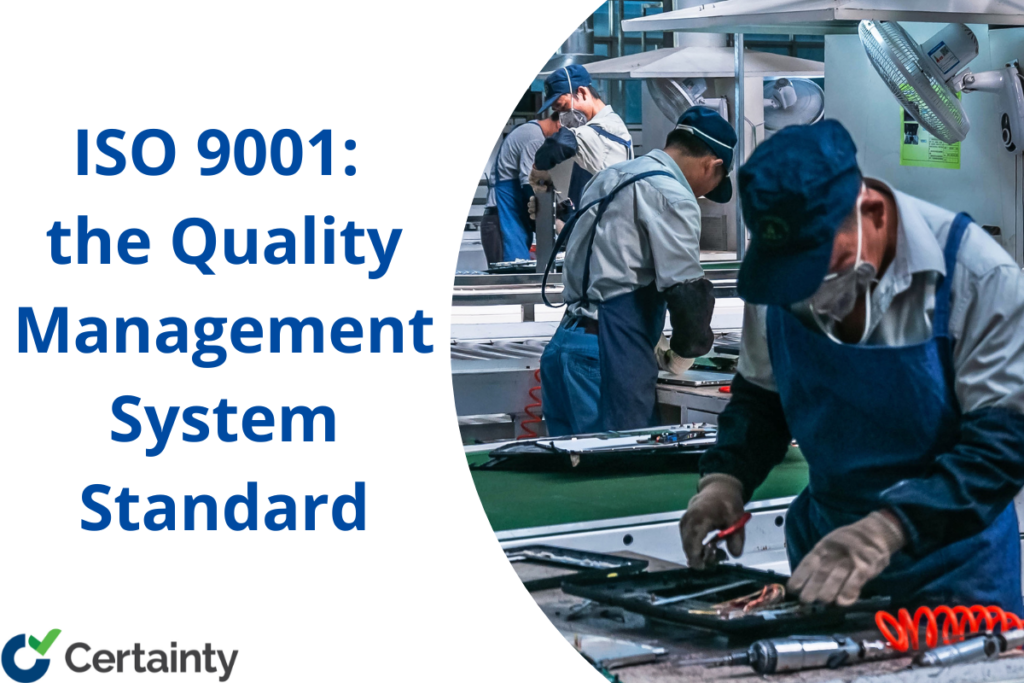Table of contents If you are a business that relies on paper-based inspections, you are likely familiar with the challenges that come with this type of system. Paper-based inspections can be cumbersome and inefficient, from time-consuming data entry to the difficulty of tracking and storing inspection data. Fortunately, there is a better way. Digital inspections […]

ISO 9001: an Overview of the Quality Management System Standard
The international standard in quality management systems (qms), ISO (International Organization for Standardization) 9001 is currently certified by over one million organizations and companies in over 170 countries (ISO). Built to be used by any business no matter the size, industry, or location, the objective of the ISO 9001 standard is to set clear guidelines for building an optimal quality management system that ensures quality, consistency, and customer satisfaction. […]

ISO 14001: Environmental Management System Standard
The ISO 14001 standards ensure a business’s scope of the environmental management system meets the ISO requirements for environmental management systems. […]

On-site vs Remote Audits: Their Advantages and Disadvantages
The Covid-19 pandemic quickly pushed businesses to remote work and to digitize previously manual processes. The same was said for the business’s external and internal auditing processes. As health and safety risks of the global pandemic increased, the traditional way of auditing primarily on-site needed adjusting towards remote auditing. This is only magnified for businesses involved in a globalized supply chain that regularly audits their suppliers. […]

What is VDA 6.3?
VDA 6.3 is a guide to process auditors and outlines the certification requirements for process-based audits and for evaluating controls in the manufacturing process. The internal analysis process of VDA 6.3 focuses on customer satisfaction with customer-specific requirements. […]

ISO 45001: the Occupational Health and Safety Standard
Workplace injuries are a prevalent problem for companies and a costly one at that. The International Labor Organization (ILO) estimates approximately 340 million workplace accidents annually. From a cost perspective, these accidents can result in potential lawsuits, incurring medical expenses, increased insurance premiums, and an overall loss in productivity. Equally important is the damage to your company’s reputation with your customers or clients. […]

OSHA Recordable vs Reportable: What are the Differences?
OSHA filing and report submissions can be a daunting task for the 8 million US OSHA-compliant worksites. Confusion about whether a work-related incident is recordable or reportable is a challenge for many businesses. However, it’s important to get it right or face the risk of being penalized.
To help simplify the processes, we’ll clarify what separates an OSHA recordable incident from an OSHA reportable incident. […]

The COSHH Risk Assessment: What it is and How to Complete it
The Control of Substances Hazardous to Health regulations (COSHH) requires employers to monitor and manage the use of any substances that are potentially hazardous to health. According to the UK’s Health and Safety Executive (HSE), these substances may include (but are not limited to) chemicals and products containing hazardous chemicals […]

Permit to Work (PTW) System — What it is and How to Implement it in Your Business
From 2018 to 2021 an average of 88,000 workers in the UK suffered from ill health, and there were 57,000 non-fatal injuries each year.
And while these numbers have been steadily decreasing over the last few decades, there’s always room for improvement […]

Considering COSHH — What’s Covered and Who’s Impacted
Hazardous substances in the workplace pose potential health risks. Consider a manufacturing plant with an excess of dust and vapors. Not only could these substances harm workers after prolonged exposure, but could lead to even more significant hazards such as unexpected and uncontrolled fire or explosions. This isn’t just an academic risk — as noted by World-Grain, the United States experiences eight-grain dust explosions every year on average. […]




